Y101 Smartwatch Review
Excellent-value outdoors watch with AMOLED display, GPS and torch
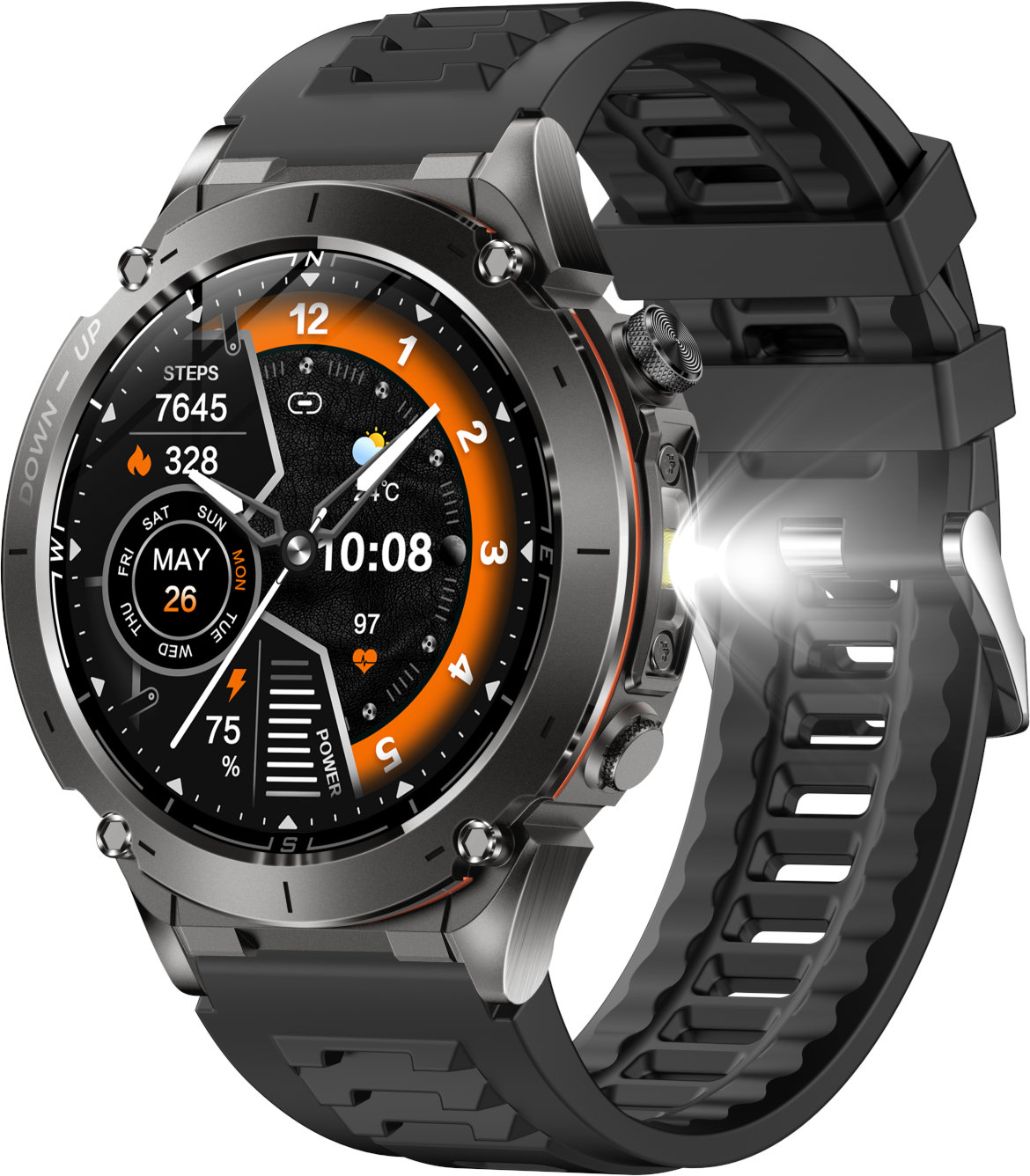
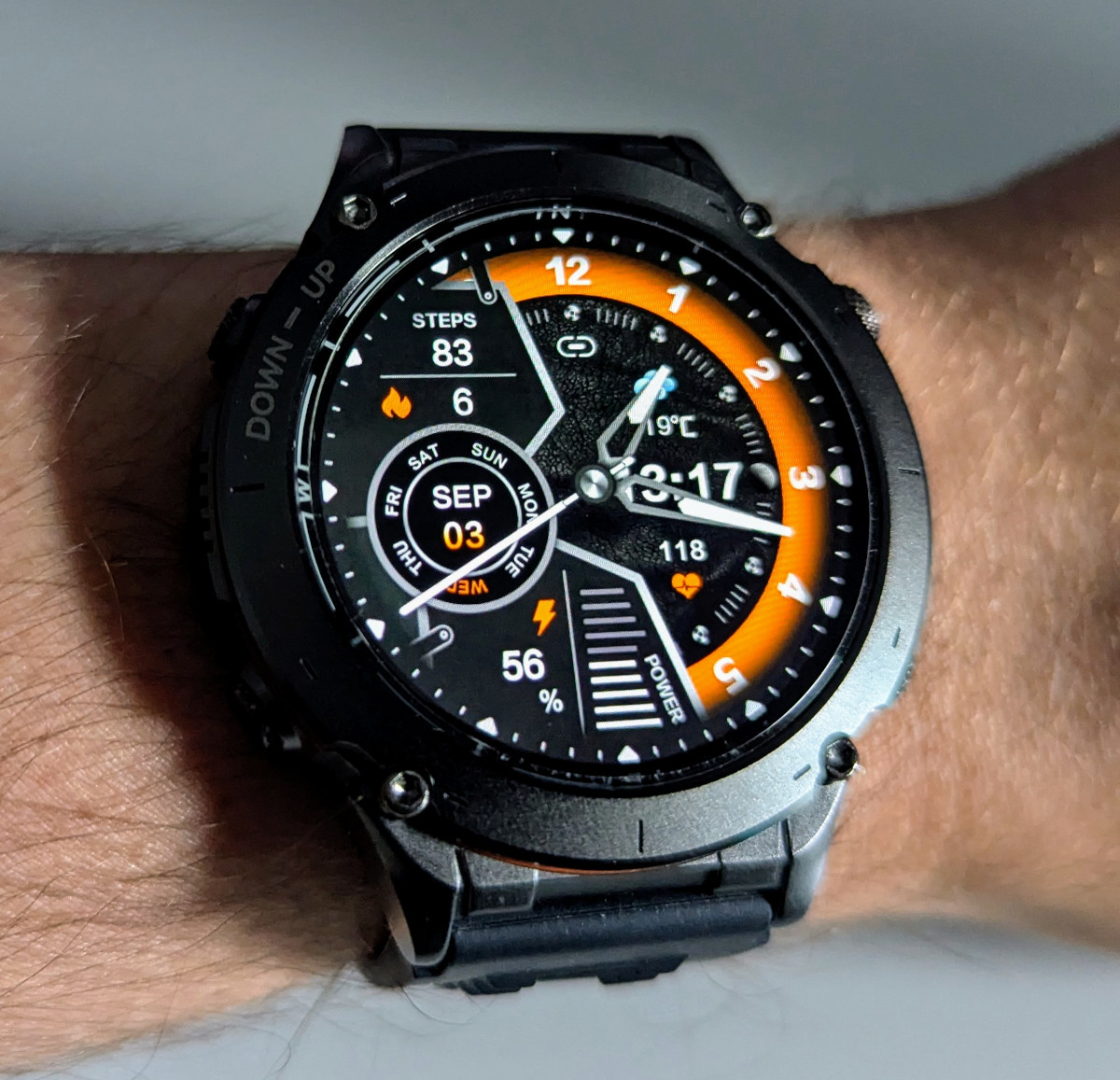
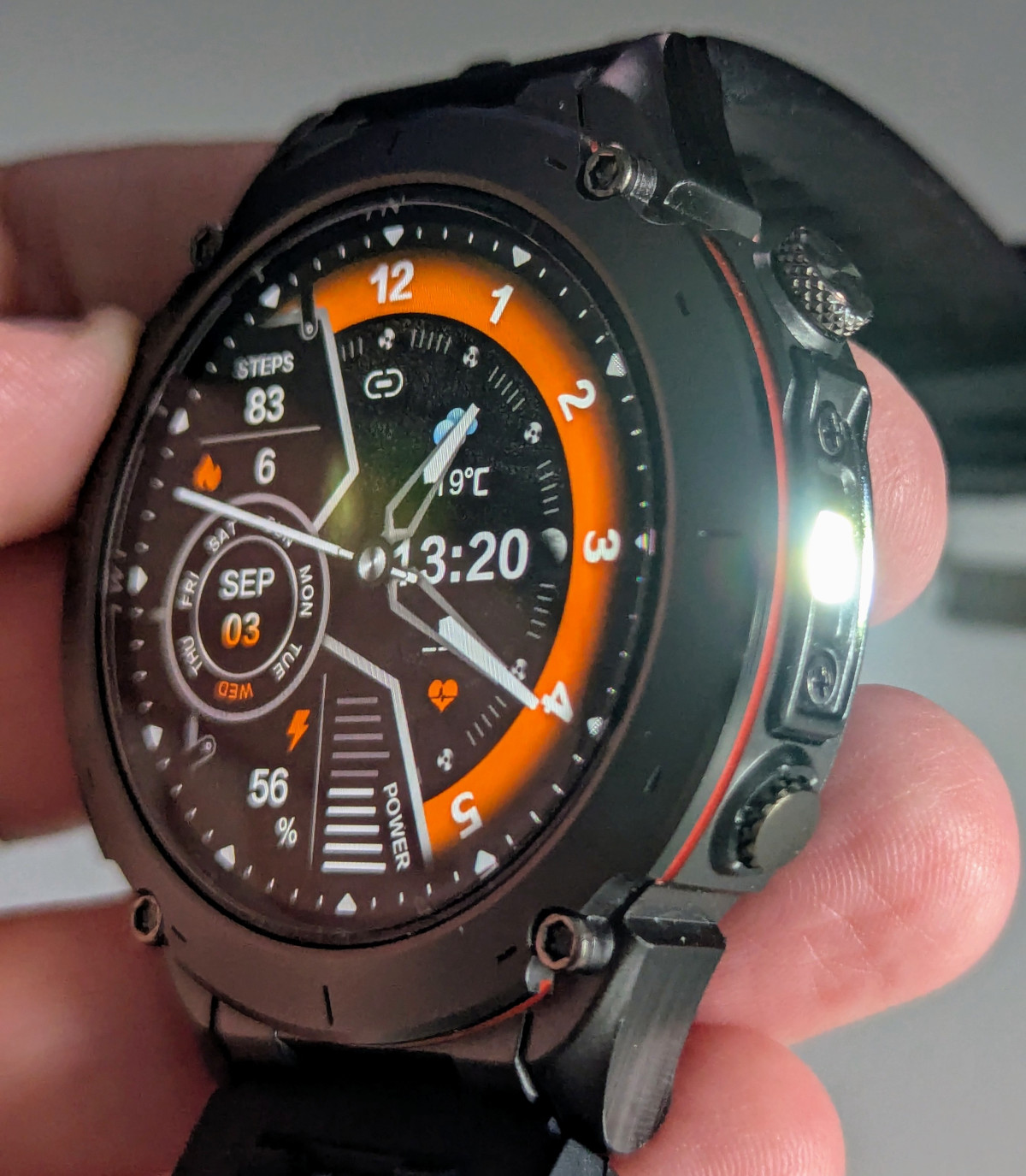
✓ Pros
- 10 day heavy use battery life
- Lovely, pin-sharp AMOLED screen
- Really good value for the price
- Activity tracking and calorie burns work well (HR caveats noted)
- Reliable GPS activity tracking (on a working unit)
- Featureful watch OS
- Really useful LED torch with a dedicated hardware button
✗ Cons
- Wobbly heart rate monitoring
- Quality control issues
Specifications
- Approximate price (August 2025)
- £35 / $47 / €40
- Display
- 1.43-inch AMOLED, 466x466, 600 nits
- App
- GloryFitPro
- Processor
- Actions ATS3085L
- Heart rate sensor
- VC30F-S
- SpO2 sensor
- VC30F-S
- Accelerometer
- STK8321
- GPS
- L1 single band. GPS, GLONASS, Big Dipper, Galileo, QZSS
- Battery
- 730mAh (7-10 days battery life, 30 days on standby)
- Water Resistance
- 3ATM
- Bluetooth version
- 5.0
- Weight without strap
- 66g
- Weight with included silicone strap
- 86g
- Dimensions
- 49 x 14.3 mm
- Watch band type
- Standard 22mm lug width
- Features
-
- Heart rate
- SpO2
- Sleep tracking
- Step counter
- GPS activity tracking
- Torch
- One-tap health check
- Breathing exercises
- Bluetooth calling
- Phone notifications
- Weather forecast
- Phone assistant
- Phone music control
- Timers
- Stopwatch
- Alarms
- Camera shutter
Box contents
The usual watch + strap + cable + manual combination, nothing special.
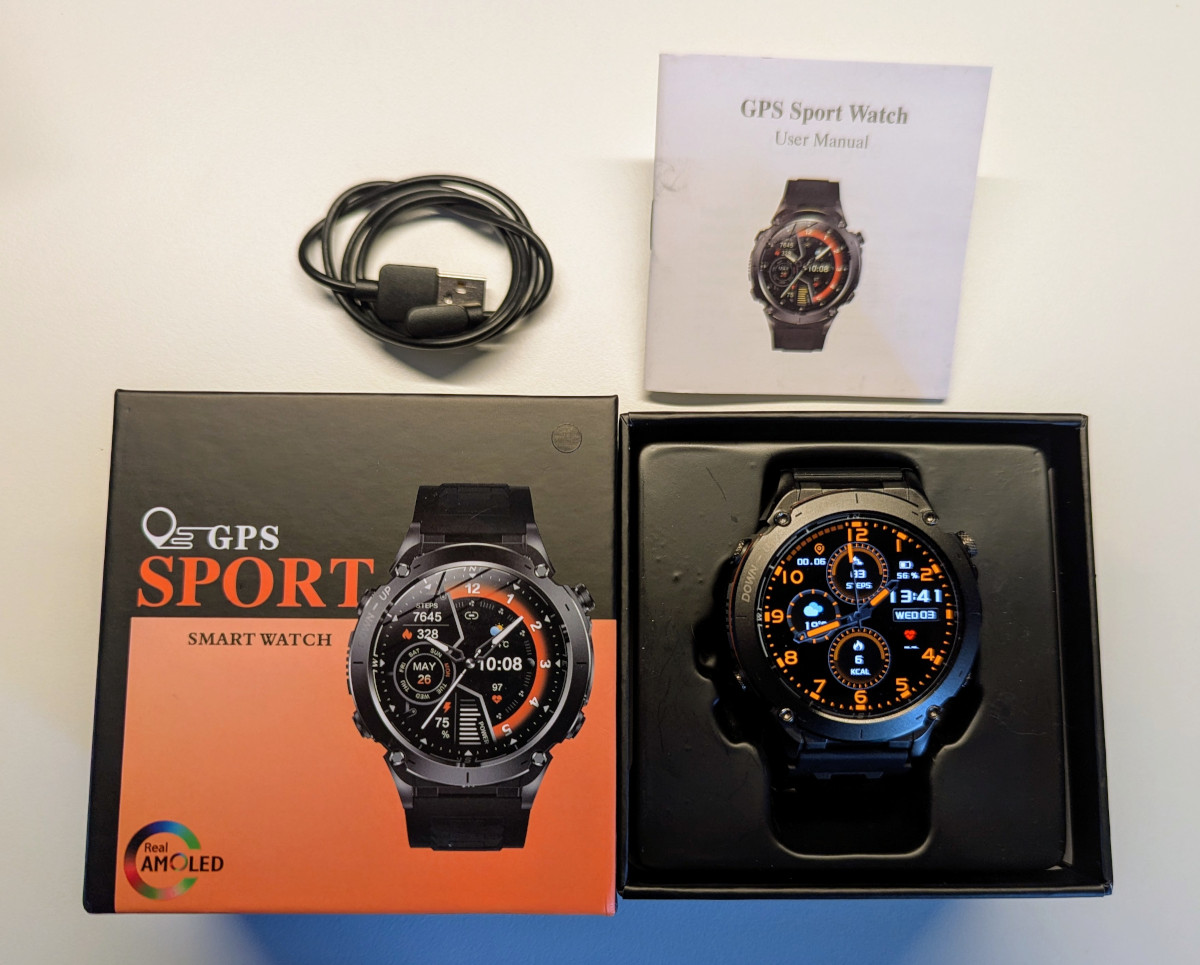
Design and Build Quality
The Y101 is a tidy-looking zinc alloy watch - not just the bezel, but also the mid-frame and the back plate. The sensor hub is covered by transparent acrylic. In general, it’s a very chunky, solidly built watch that feels really good on the wrist, even if it’s a bit on the heavy side at 86g with the included strap.
It comes in either silver or black variants (I bought the black one) with a circular, rugged, sporty design. The black version also has a variant with an orange top right button.

In general, the build quality of the watch is good, but I’ve experienced quality issues - I have two identical units from different resellers, one of which has a non-functional GPS module and the other is missing one of the magnets on the charging port. This is really disappointing, as the watch is otherwise very well built - but two faulty units out of two is just too much.
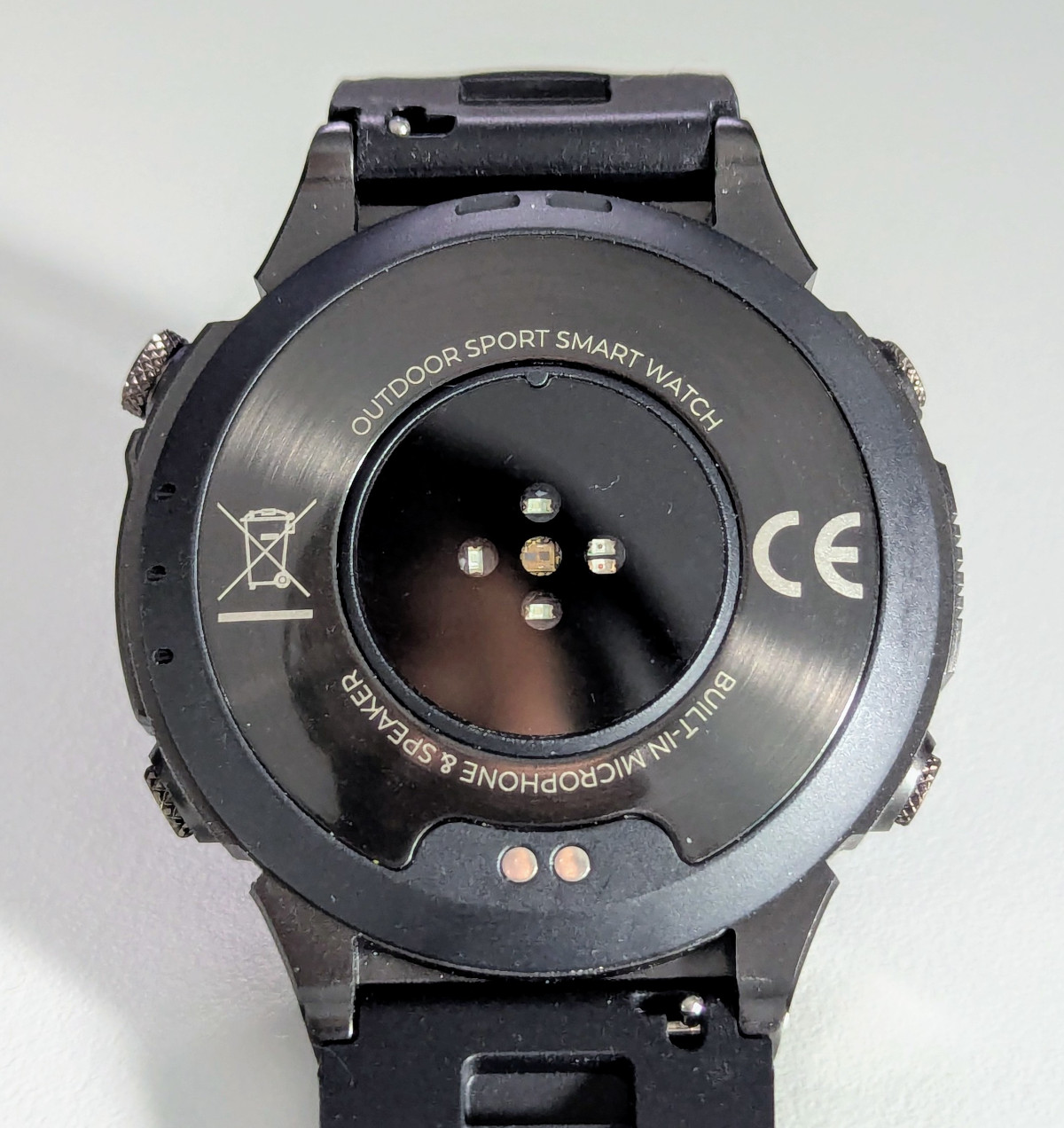
It sports a torch on the right-hand side. It’s not particularly bright - especially compared to watches like the FT66 - but it’s still really useful and bright enough to use in a pinch. There’s a dedicated hardware button to turn it on and off as well, which is, in my opinion, a must-have on any watch with a torch.

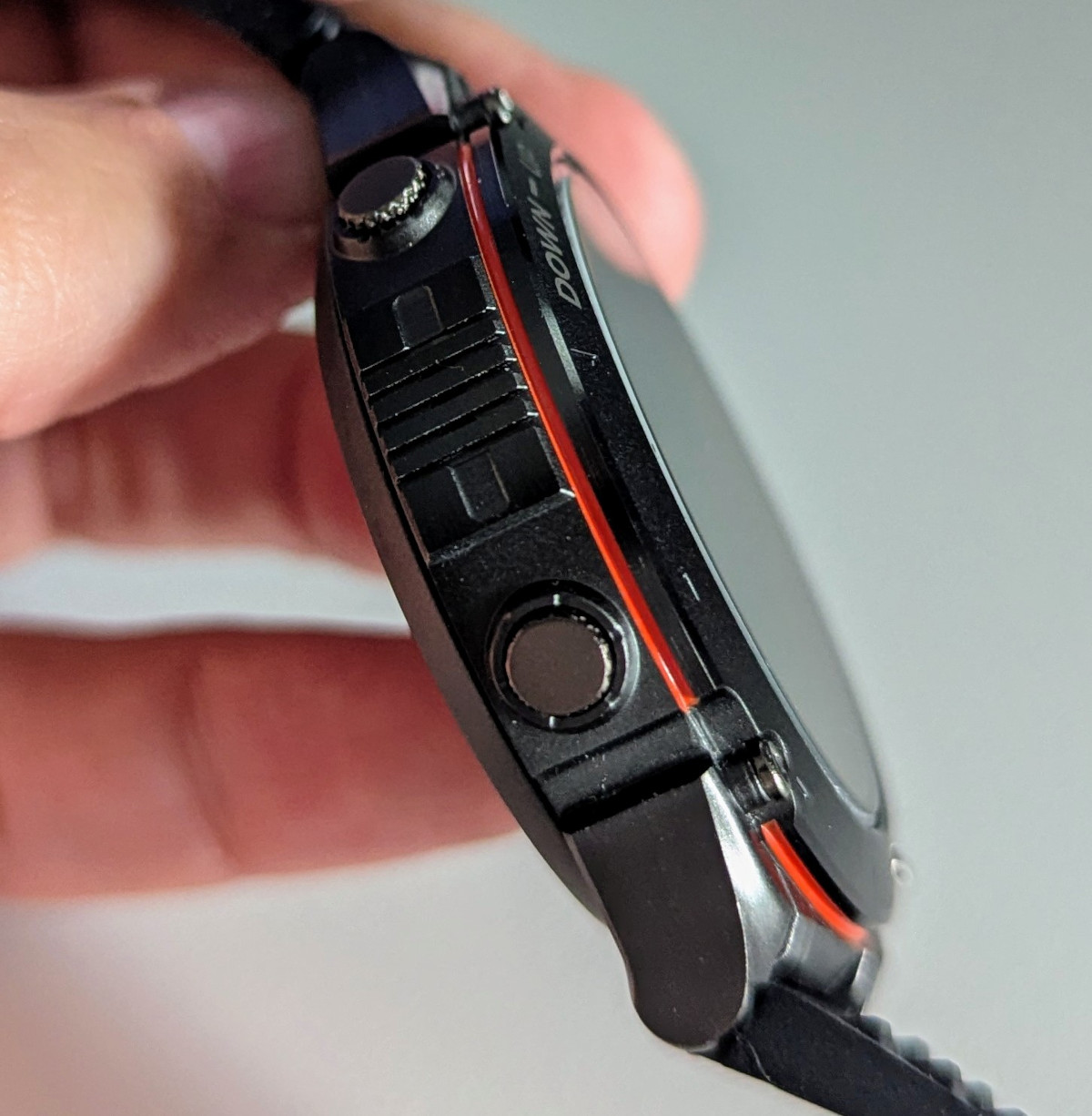
The watch has four physical buttons, two on each side:
-
Top right: power button when long-pressed, back to watch face, and when on the watch face, it turns the screen off. Opens the apps menu. It looks like it could be a rotating crown, but it isn’t.
-
Bottom right: back button when outside of the watch face, a configurable shortcut when on it, and long press opens the voice assistant app.
-
Top left: shortcut to the workouts app.
-
Bottom left: torch on / off.
Display
The 1.43-inch AMOLED display is both bright and vibrant, maintaining excellent visibility even under direct sunlight, thanks to its 600-nit brightness. With a resolution of 466x466, the display delivers sharp graphics and clear text, leaving very little to fault.
While the glass isn’t made of Corning Gorilla or sapphire, this is expected for a watch at this price range and isn’t a major drawback. It is slightly recessed, which helps protect it from scratches when placed face-down.
As it’s a standard flat circular display, finding screen protectors is effortless. I’ve personally opted for a 38mm tempered glass protector, leaving just enough edge room to allow easy removal if needed.
The Always-On Display (AOD) feature is supported, offering a curated collection of watch faces. However, enabling AOD will drastically reduce the watch’s battery life, cutting it in half. I personally prefer to just enable raise to wake, which is very responsive and easy on the battery.
Watch interface
The Y101 runs the same watch OS as other GloryFitPro models that share much of the internal hardware, such as the K67 / k67A and the Kospet Tank T3 Ultra 2. The system feels intuitive and polished, but not especially smooth - on heavier screens like heart rate graphs, the frame rate drops into the single digits. It doesn’t hinder usability, but it does make me wish the manufacturer used the more advanced Actions ATS3085S on some models - it offers a stronger GPU, as seen on watches like the Starmax GTX2 or FT66.
General swiping is acceptable, though there’s plenty of room for improvement. I’ve noticed a couple of irritations:
-
From the watch face, directional swipes to access different areas are somewhat inconsistent, and it’s often best to place your finger at the far edge opposite the intended swipe. The cards view also requires swiping down from the very top.
-
Scrolling through apps with multiple pages of content - like weather or heart rate - can be annoying, as it snaps page by page and frequently overshoots the page you were aiming for.
This should be solvable via software, but to date only a single firmware update was received (without a changelog), which did not address this problem during the review period.
From the watch face, swiping down brings up the quick settings, which are editable. There are a lot of options and it’s genuinely useful:
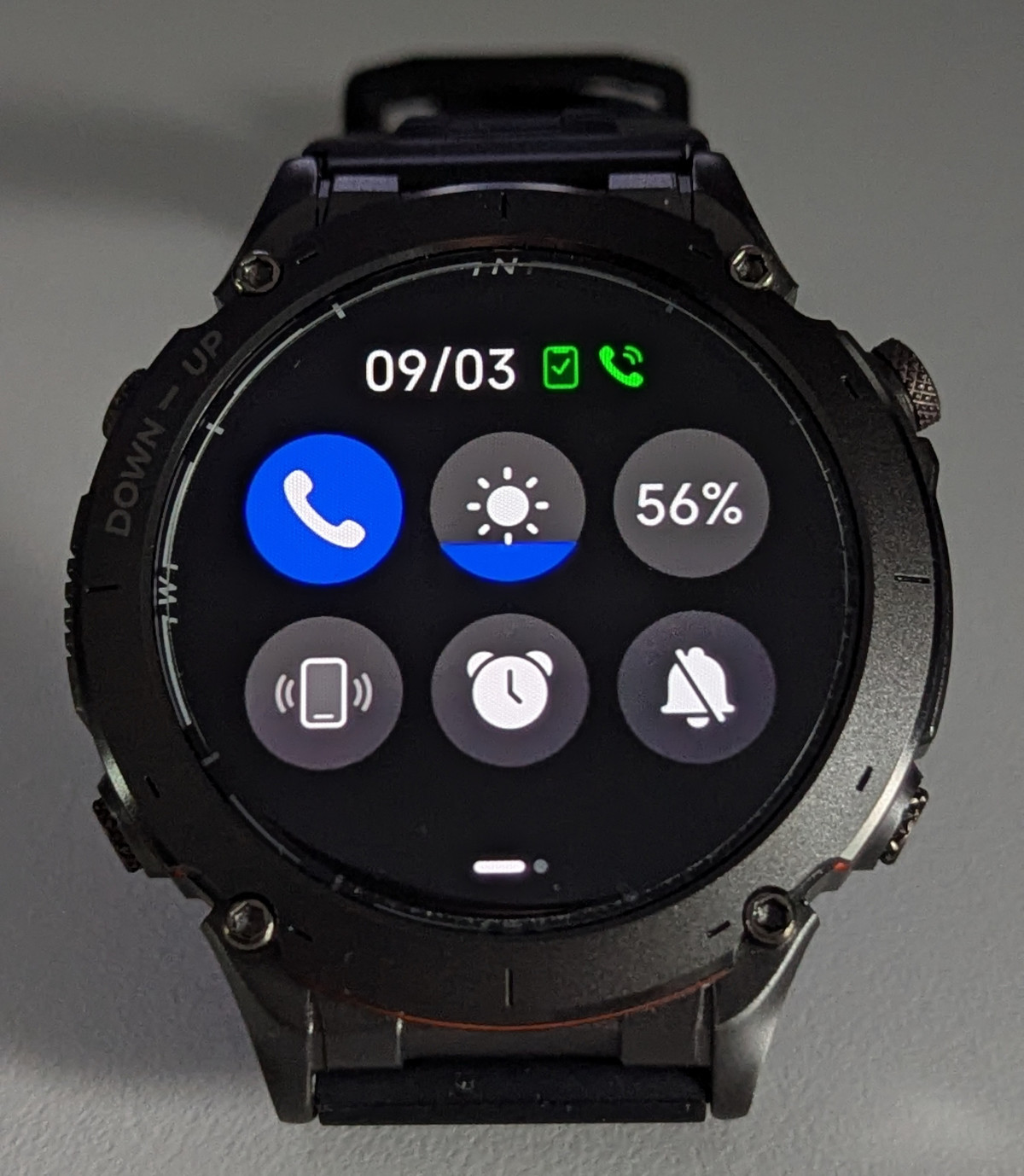
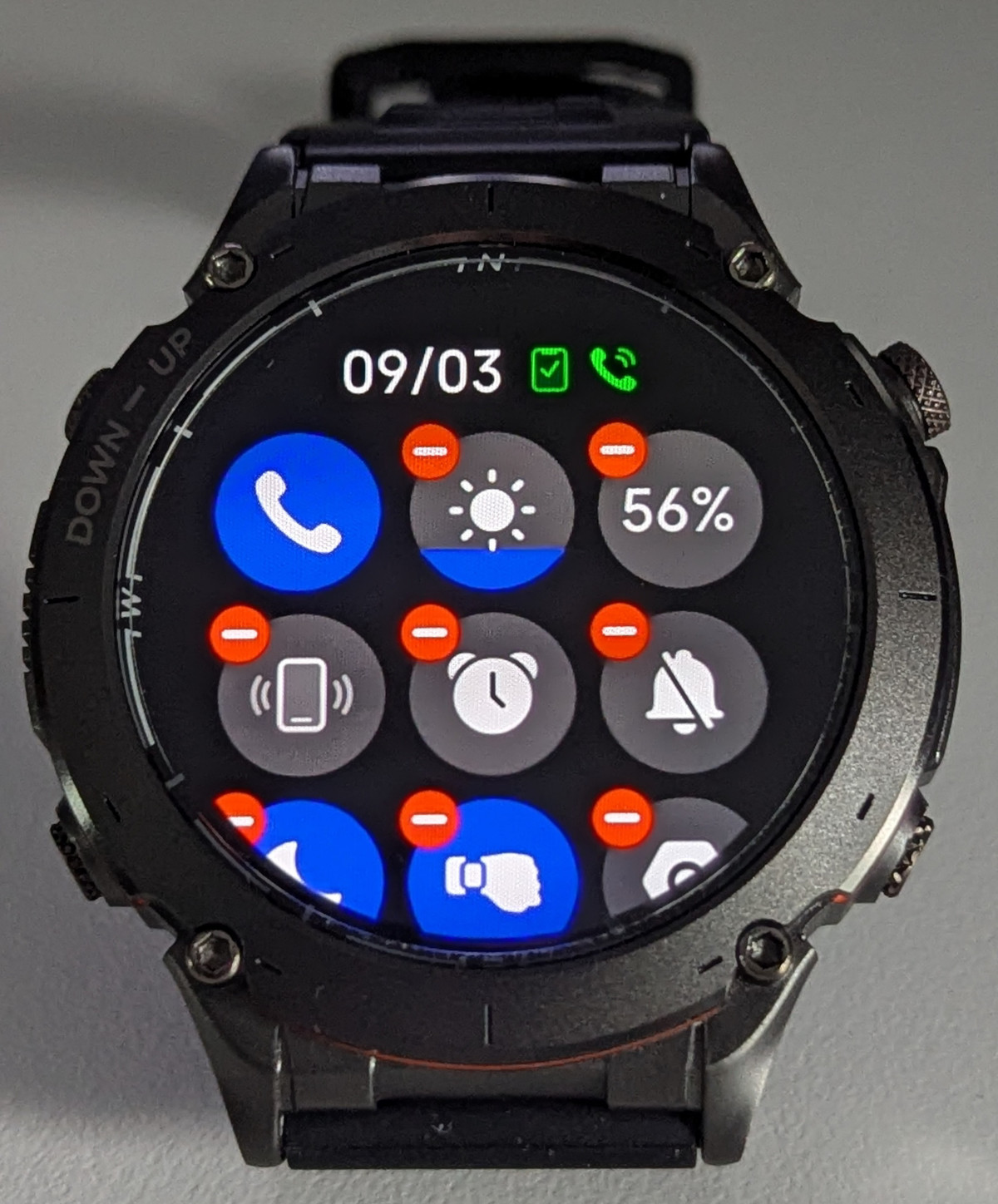
A left swipe opens the apps menu. There are multiple menu styles, such as icon grids and similar layouts, but I’ve found them largely unhelpful, while the list view is the most effective for quickly finding what you need - as it not only displays app names, it shows them for all apps currently visible. Sadly, the sorting seems somewhat random, making items difficult to locate:
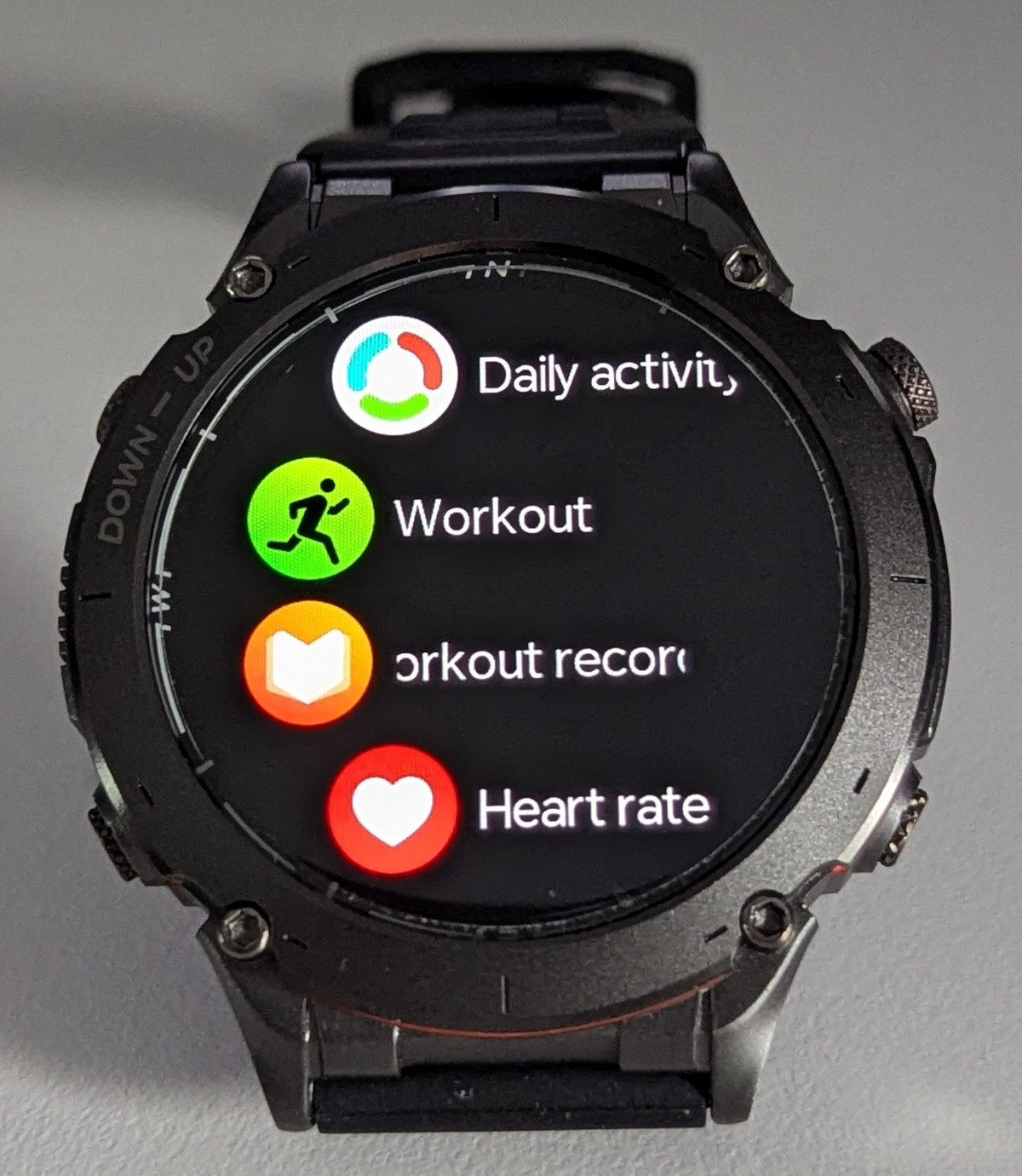
A right swipe reveals the notifications menu. Notifications are fairly basic - they simply mirror your phone’s alerts and nothing beyond that. You can select which app notifications get forwarded in the companion app. However, the list of selectable apps is quite limited and, on my phone, misses key ones like Google Calendar or my banking apps. You can work around this using the “Notify for Smartwatches” app from the Play Store, which can be chosen in GloryFitPro and then routes notifications from unsupported apps.
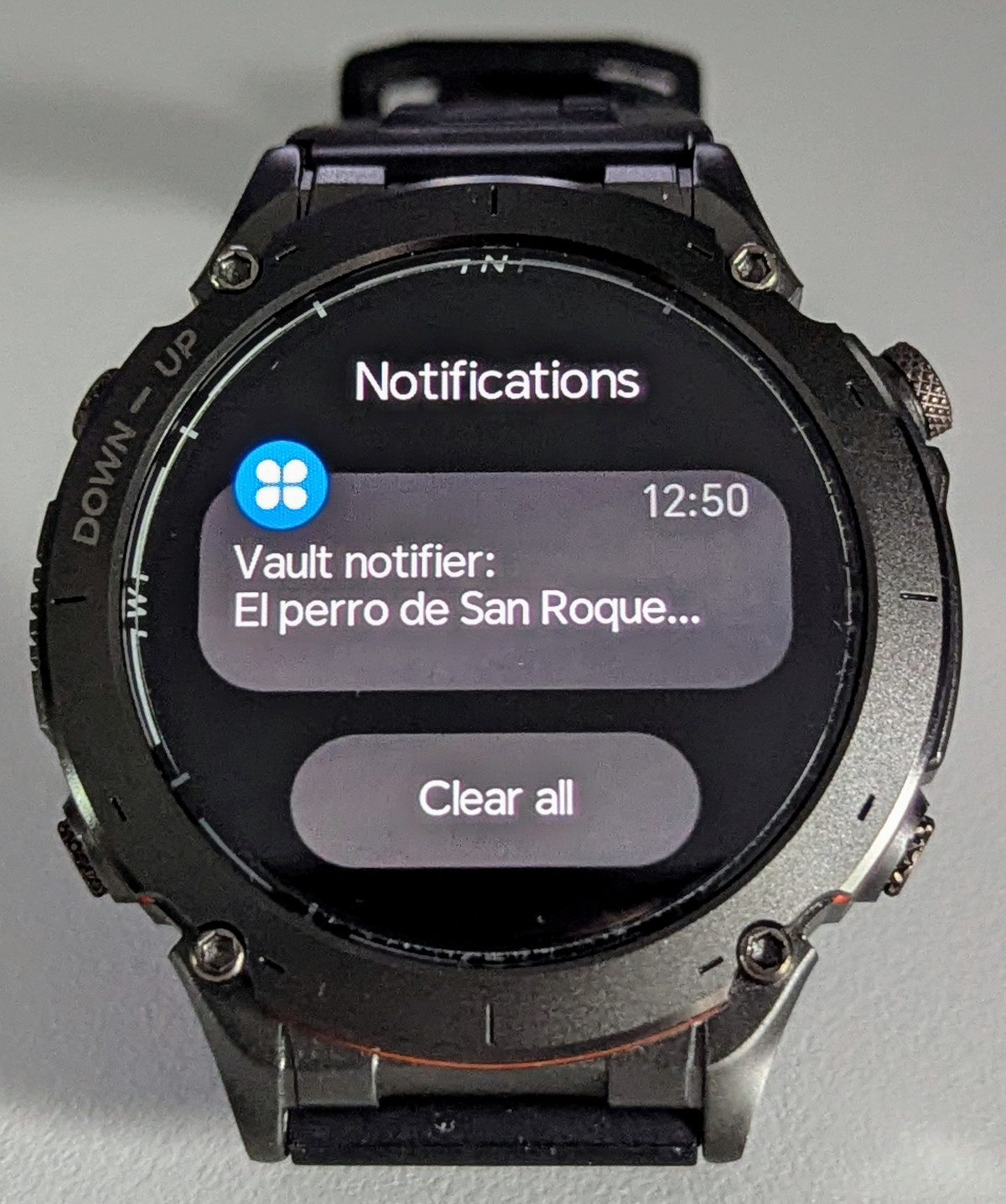
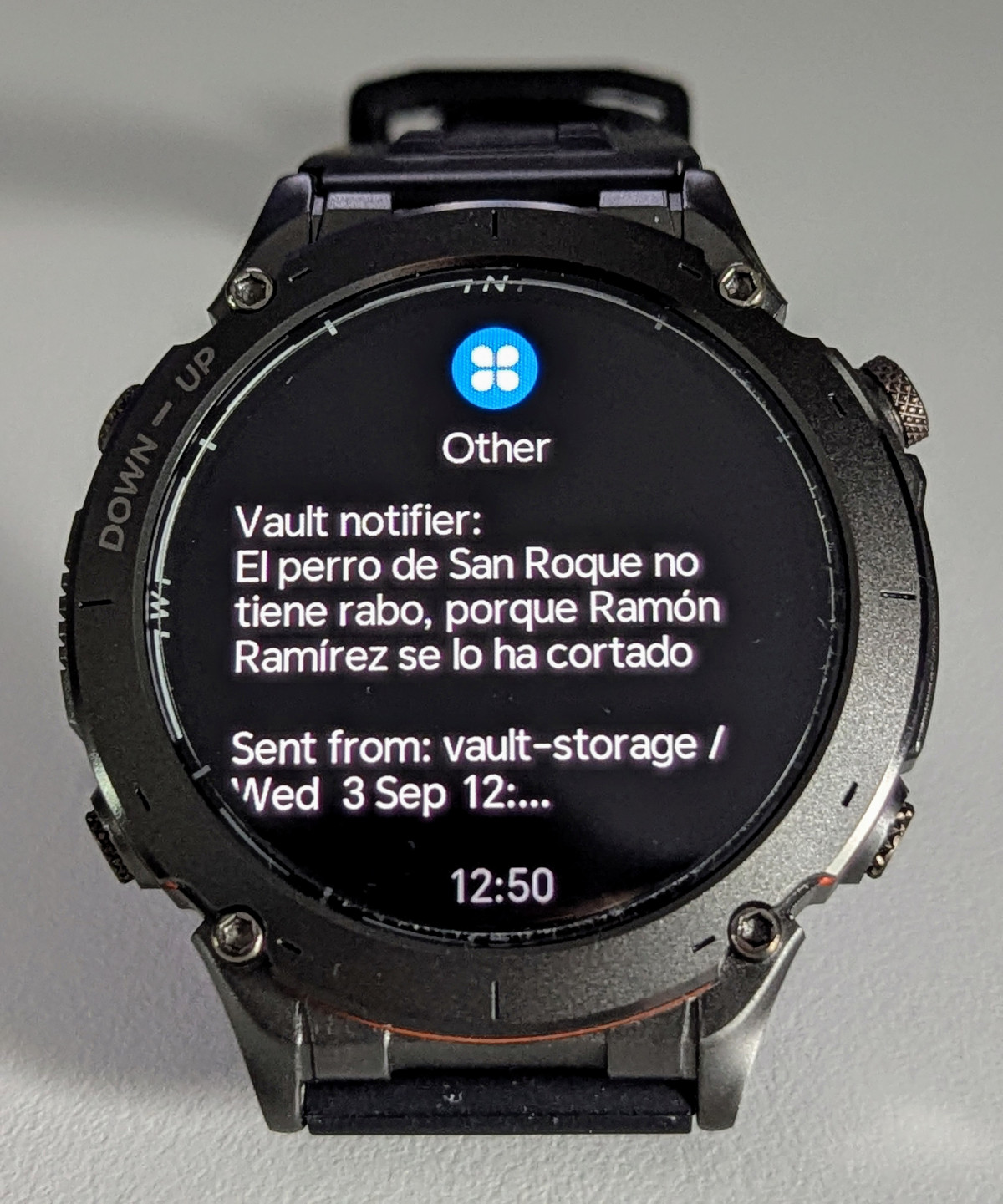
Lastly, swiping up opens the cards menu, which is a very handy aspect of the watch. Here you’ll find cards for things like daily activity, heart rate, sleep tracking, timers, etc. It’s the best way to interact with the watch’s various apps, and it’s customizable - you can remove and reorder items to suit your needs.
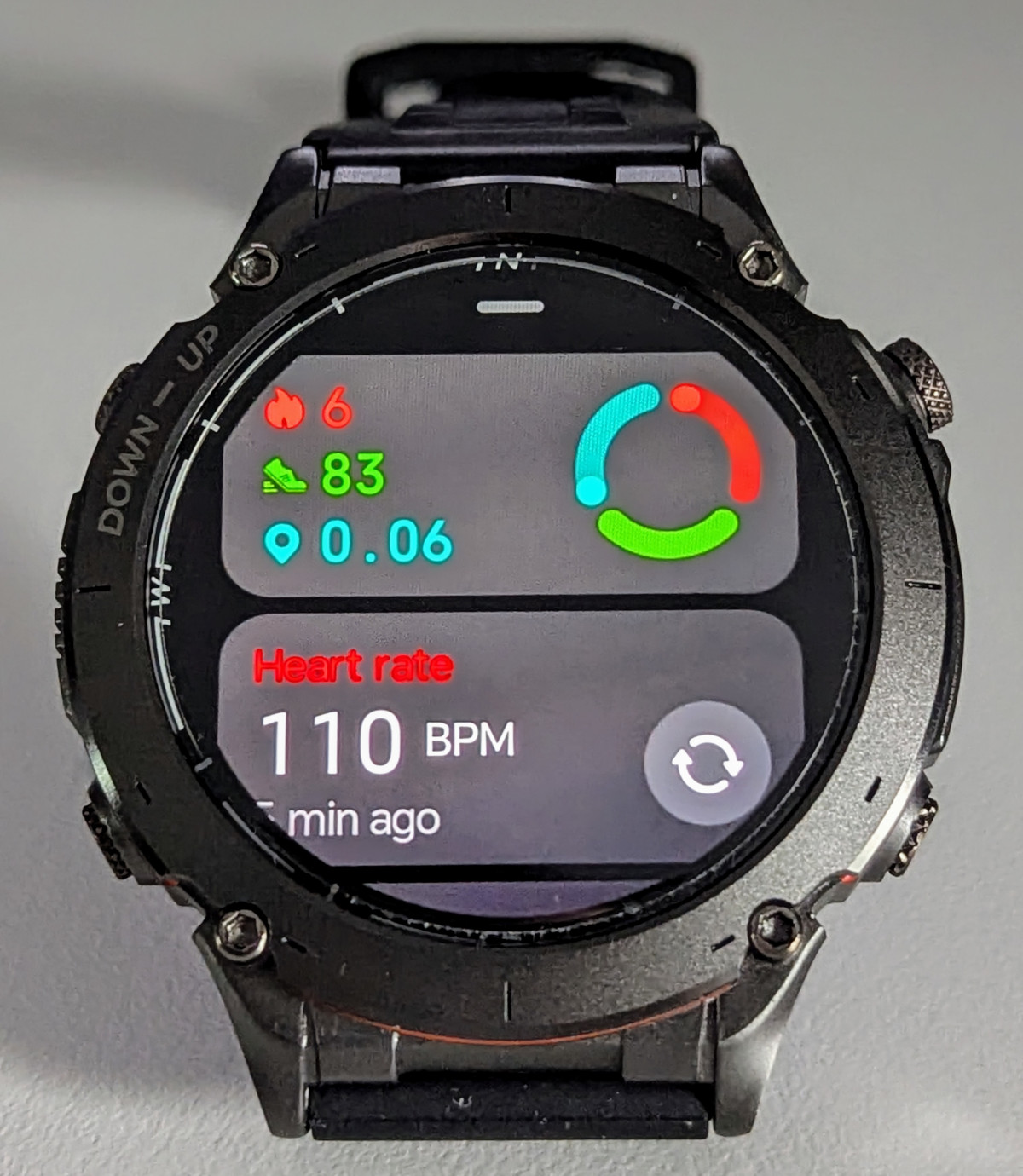
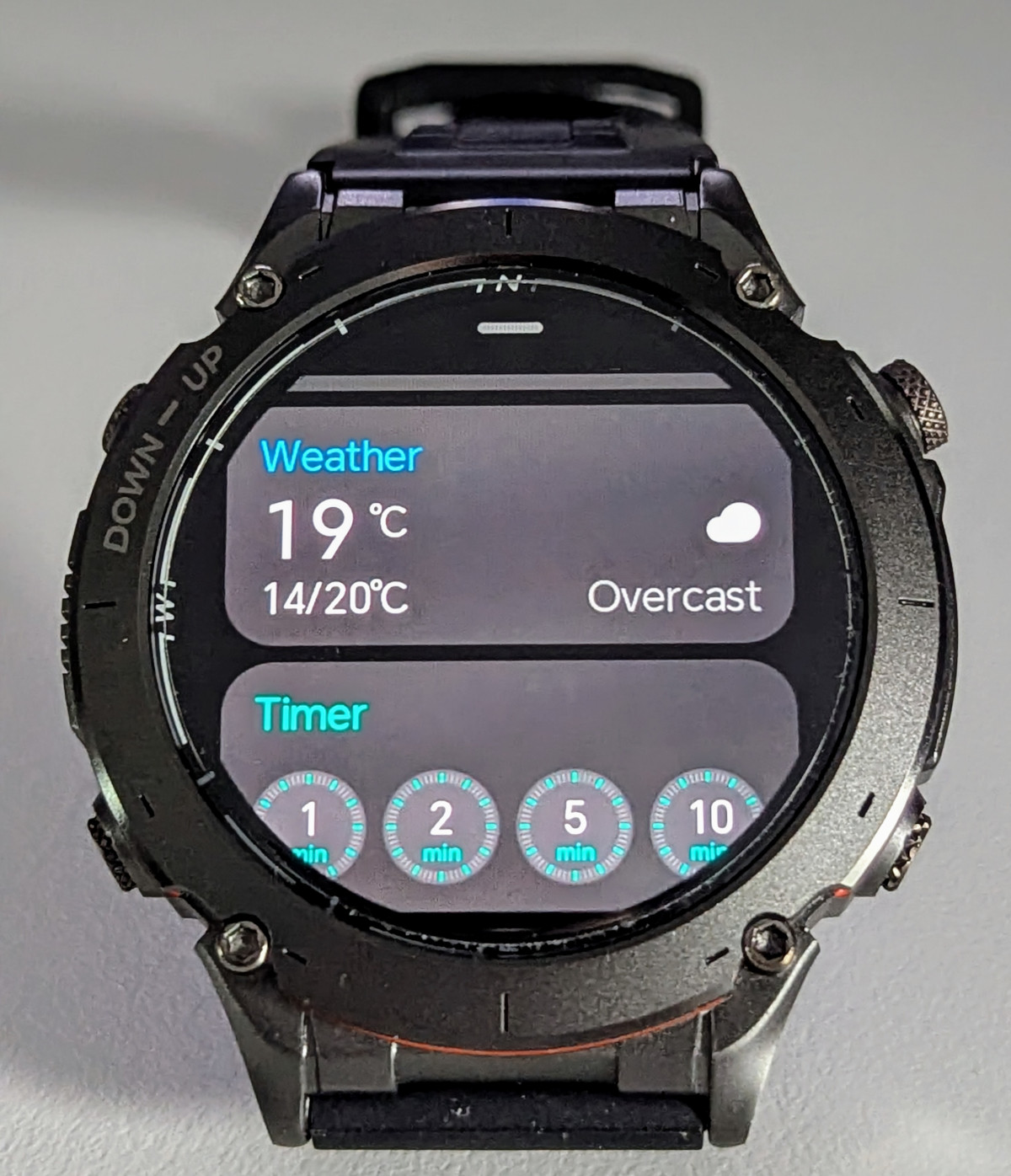
Note: some configuration options are quite hidden and not available either from the app or the watch settings, like more granular configuration for the heart rate monitor. You’ll configure these by going to their apps on the watch and scrolling all the way down.
Watch faces
The watch comes with 7 preinstalled watch faces that cannot be removed, some of which have actionable buttons (hard to tap, though, and barely useful), and allows you to install a further 4 from the app. The selection on the app is ample, and there are loads of good options there.

AOD has its own separate pool of watch faces - 7 preinstalled and one that can be installed from the app.
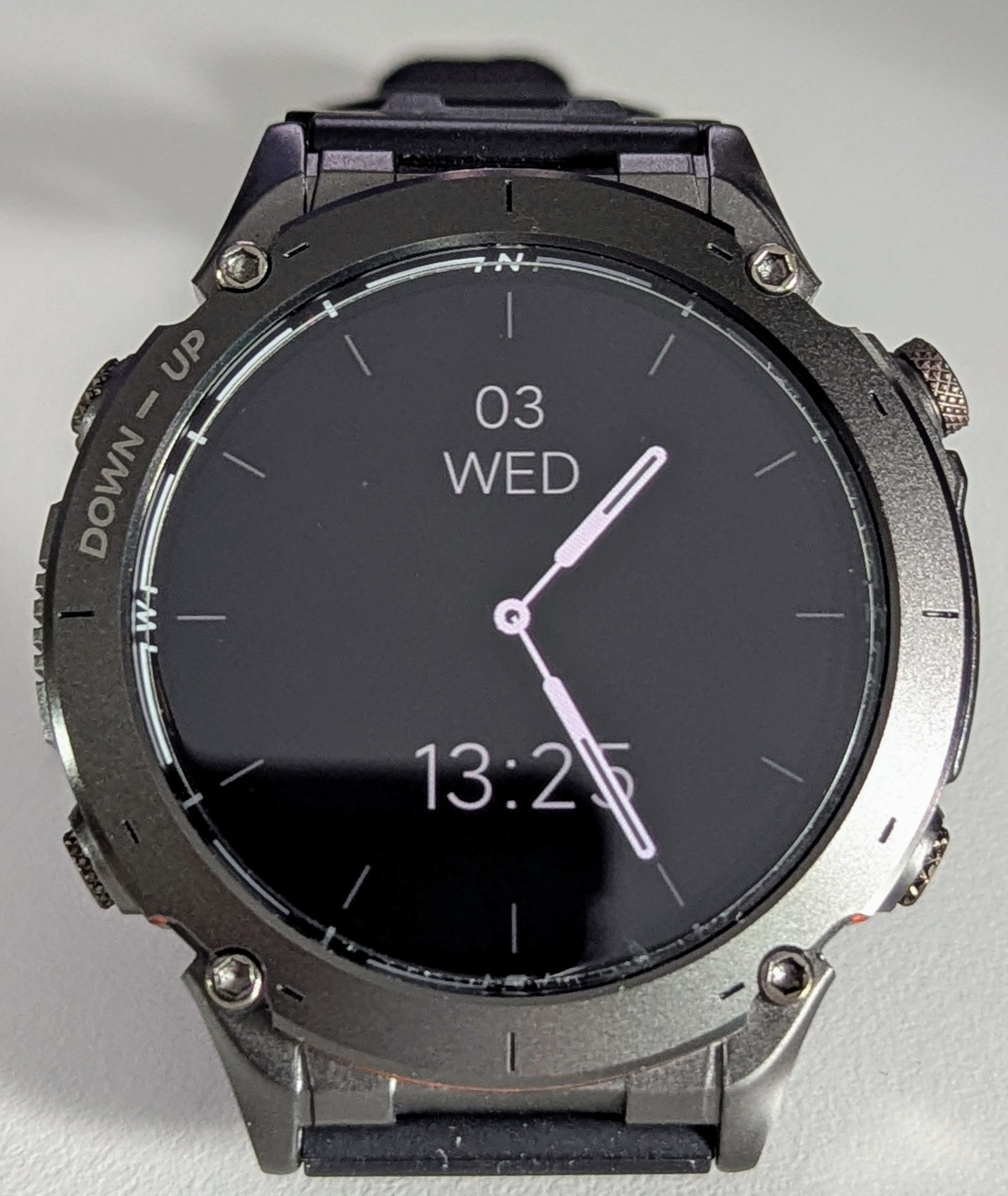
Battery Life and Charging
Battery life is the Y101’s standout area. The 730mAh battery offers up to 10 days of heavy use with raise-to-wake enabled and as much as 30 days on standby. These numbers compare favorably with other smartwatches and help remove the daily charging anxiety many users face.
Enabling Always-On Display, however, roughly halves battery life - from about 10 days to around 3-5 depending on settings. I chose to keep it off and depend on raise-to-wake instead, which responds quickly and is practical.
The magnetic charging cable connects firmly and brings the watch from empty to full in roughly 2 hours. The watch also includes power-saving modes that can stretch battery life further by curbing certain functions, such as notifications.
Note: one of the two units I have is missing one of the magnets on the charging port.
Health Monitoring
The Y101 covers the basics of health monitoring with 24/7 heart rate tracking, blood oxygen monitoring and sleep tracking.
Heart rate and SpO2
With regard to the heart rate sensors, this watch sports the VC30F-S sensor, which is found widely in the budget segment of Chinese watches. Specifically, it seems to be the same heart rate sensor used across - but not limited to - all of the GloryFit and GloryFitPro watches.
Continuous heart rate monitoring, as recorded by stats and the app, is done on a schedule that is somewhat configurable (5, 10, 20 minutes…), and the heart rate sensor will also wake when the screen turns on to take live readings until the screen goes off.
This watch has the same problem as the K67A I reviewed recently with the heart rate sensor. It has a cold boot issue whereby the sensor records what looks like double the heart rate when it wakes up from being off. This completely messes up heart rate monitoring, as your readings will appear ridiculously high all day long. You can see a comparison of the same 24-hour period with a Pixel Watch 2 via Fitbit:
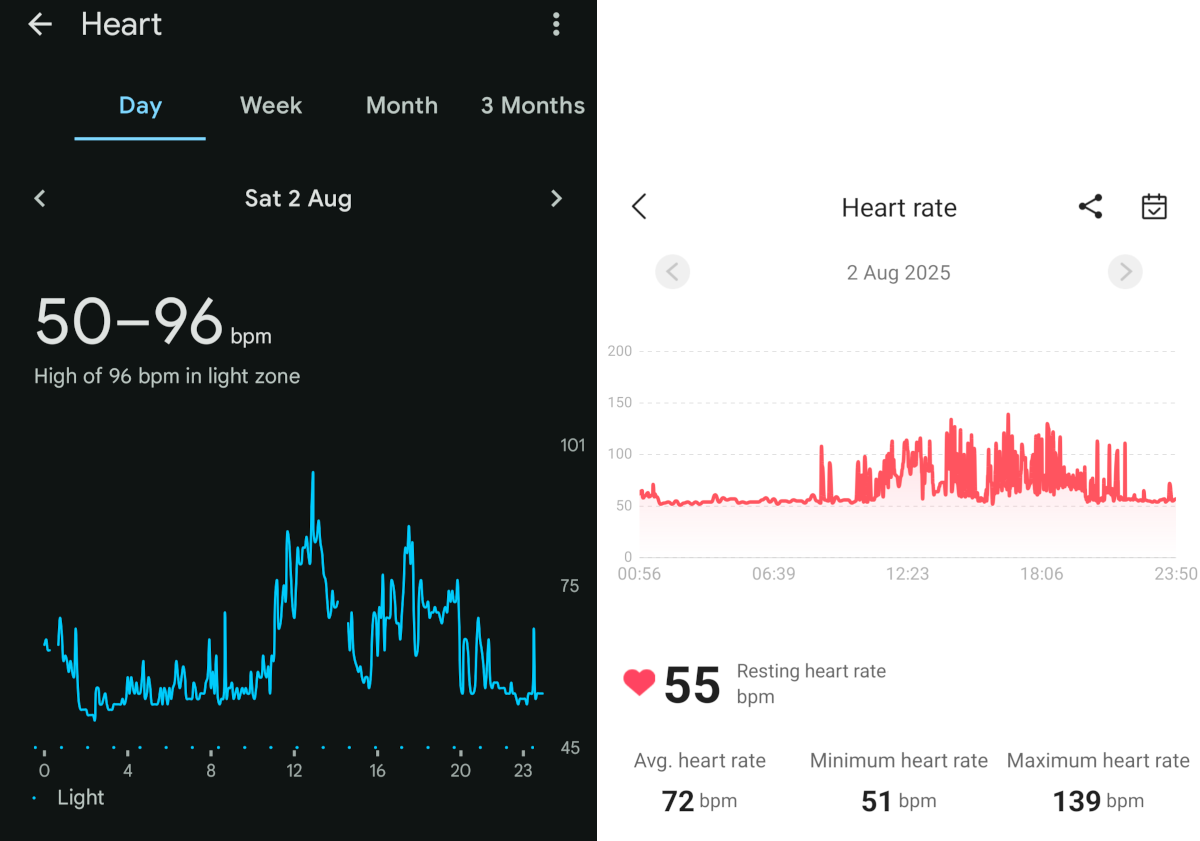
There are plenty of 100-120bpm peaks there that just did not happen.
Conversely, compared to the K67A, this was not a huge problem during workouts - once the activity is started and the sensor starts reading true heart rate, it continues to do so until the end. The readings aren’t too accurate during workouts, however.
The issue may or may not be related to the watch’s movement, as often during sleep the readings look (mostly) normal. Wearing the watch pretty tight, however, makes no difference to the reliability of the readings.
Sleep tracking
I found sleep tracking to be surprisingly decent, compared to my Pixel Watch 2. The watch was able to successfully detect my sleep and wake-up times, as well as provide a reasonable ballpark of the different sleep stages, especially deep sleep. It does seem to confuse REM with light sleep in places, but that’s quite common even on top-shelf sleep trackers. The watch did, however, fail to detect short wake-up moments during the night, such as loo visits.
![]()
Stress
Not much to say about this. It measures your heart rate, then gives you a stress score. It seems to be reasonably accurate when the heart rate sensor was working properly, but I found its usefulness to be rather limited - more of a curiosity.
Emotional state
I honestly have no idea what this is meant to do or how it works. Probably filler functionality that could be removed by the manufacturer.
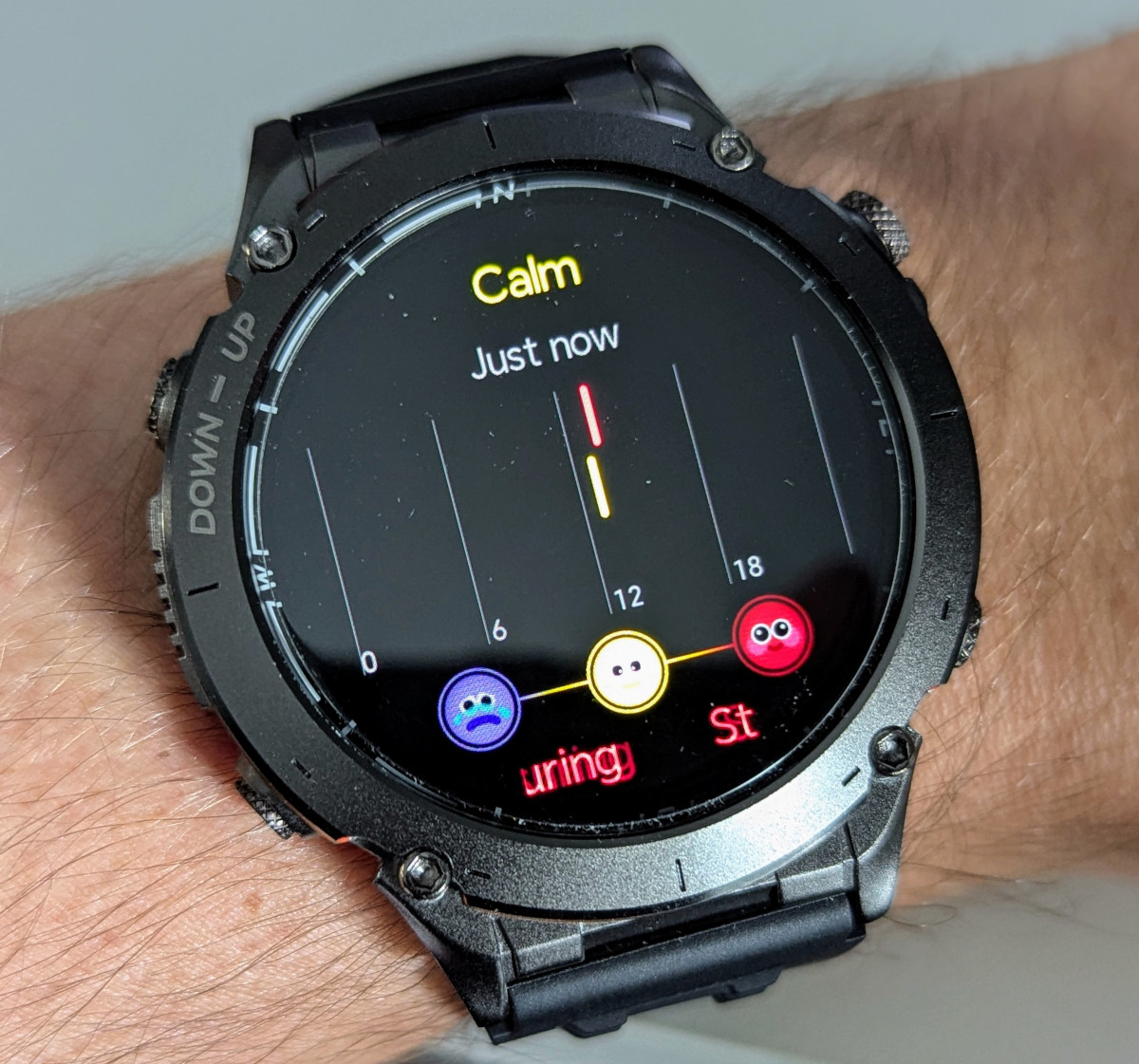
One-tap health check
The Y101 has a one-tap health check feature that allows you to quickly check your heart rate, blood oxygen, and stress levels.
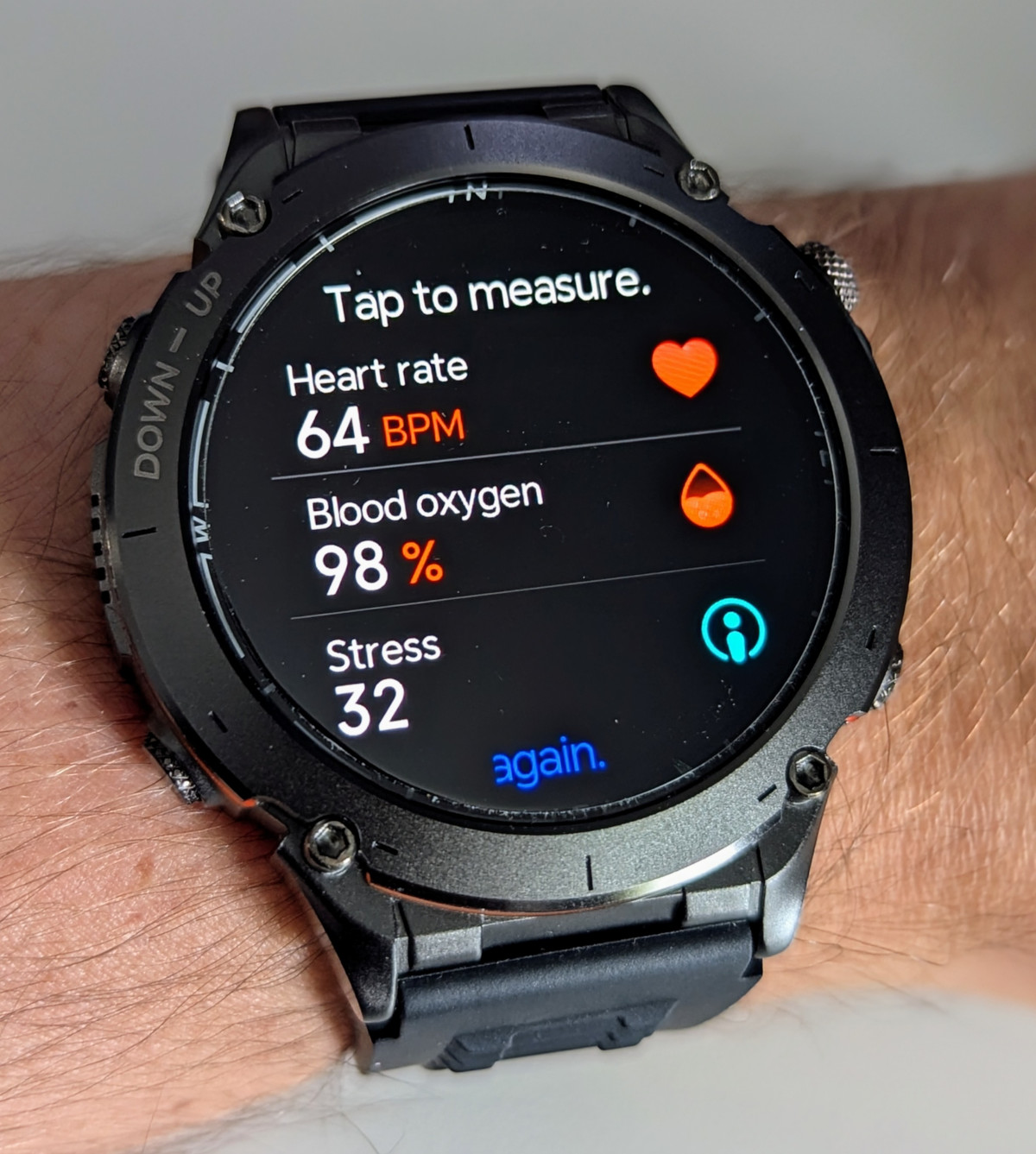
Fitness and Outdoor Features
The Y101 includes a wide range of sports modes, spanning common options like running and cycling as well as more niche activities. Its GPS with AGPS offers dependable tracking in most conditions, though it’s not as accurate as the multi-band GPS setups found on higher-end models. In my workouts, though, I found the GPS consistently traced my routes with minimal wobble. Here’s an example of a recent outdoor walk:
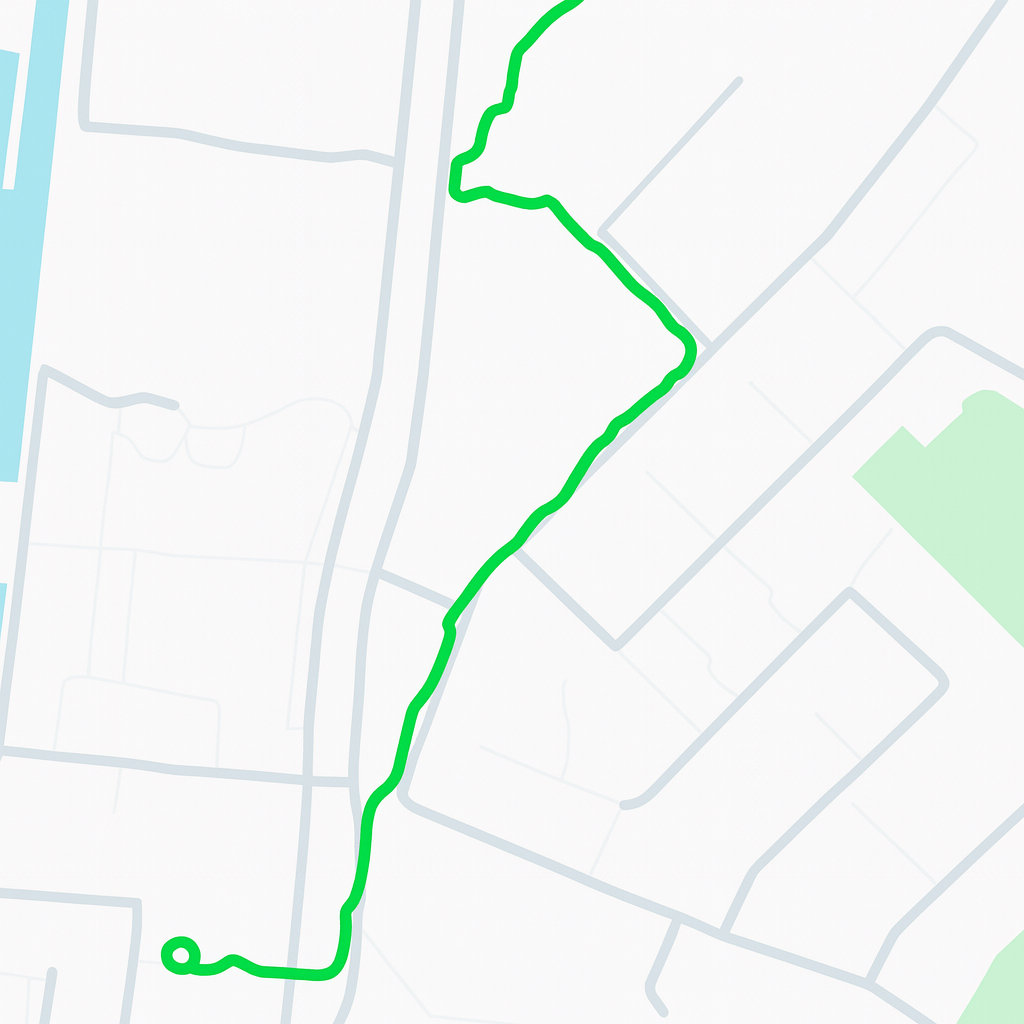
When it comes to metrics like distance, calorie burn, steps, and heart rate, I found it to be fairly close to my reference Pixel Watch 2, which is among the best watches on the market for this. Note that Fitbit devices do not separate BMR calories from your workouts, while most other devices, including the Y101, do and report only active calories. My BMR is roughly 1.1 kcal per minute, which helps explain the gaps you see below. Heart rate tracking during workouts is just okay; I’ve certainly seen it work better on other GloryFitPro models with the same sensor, like the HT36.
Here’s an outdoor walk on the Y101:
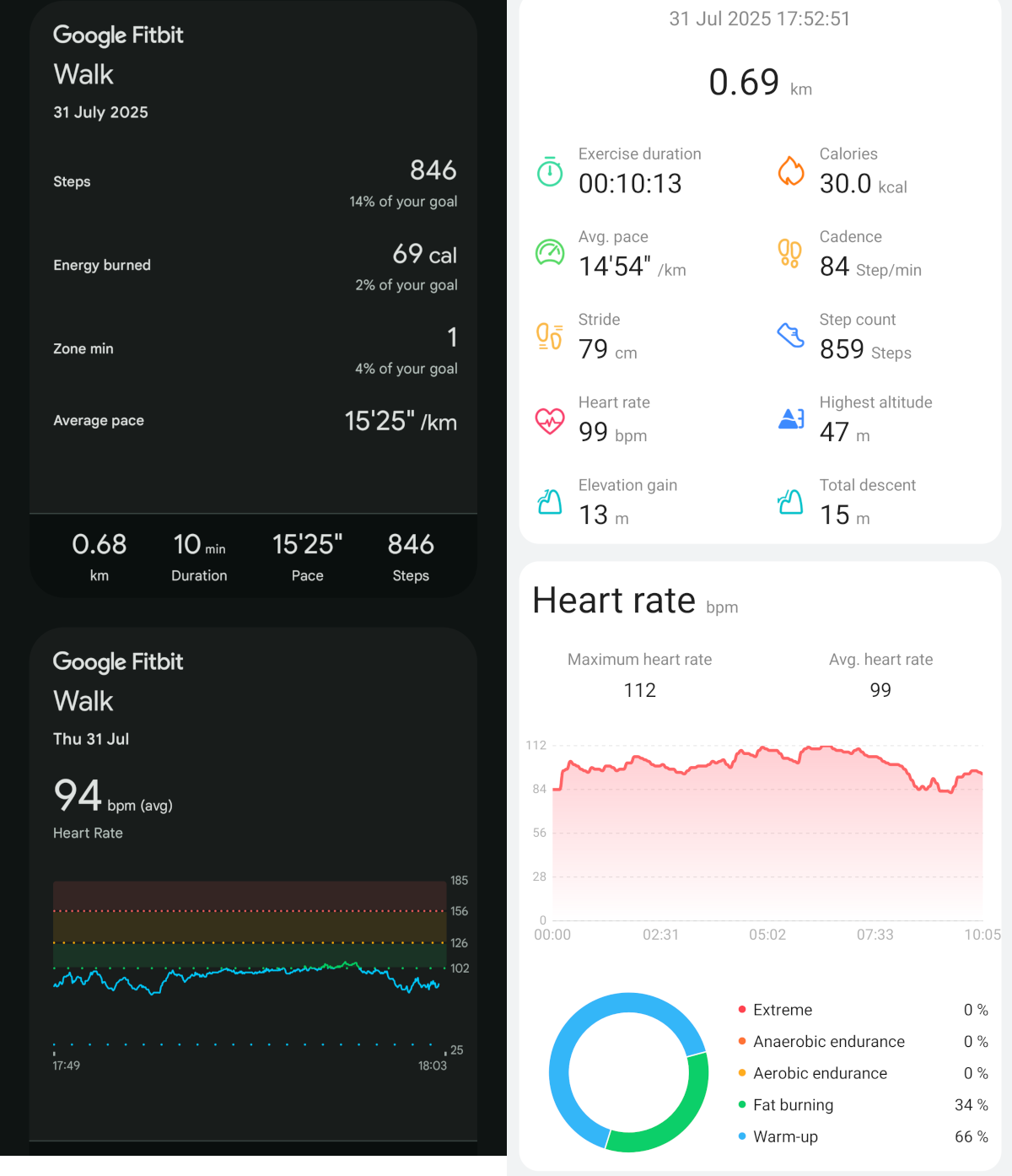
An elliptical training session:
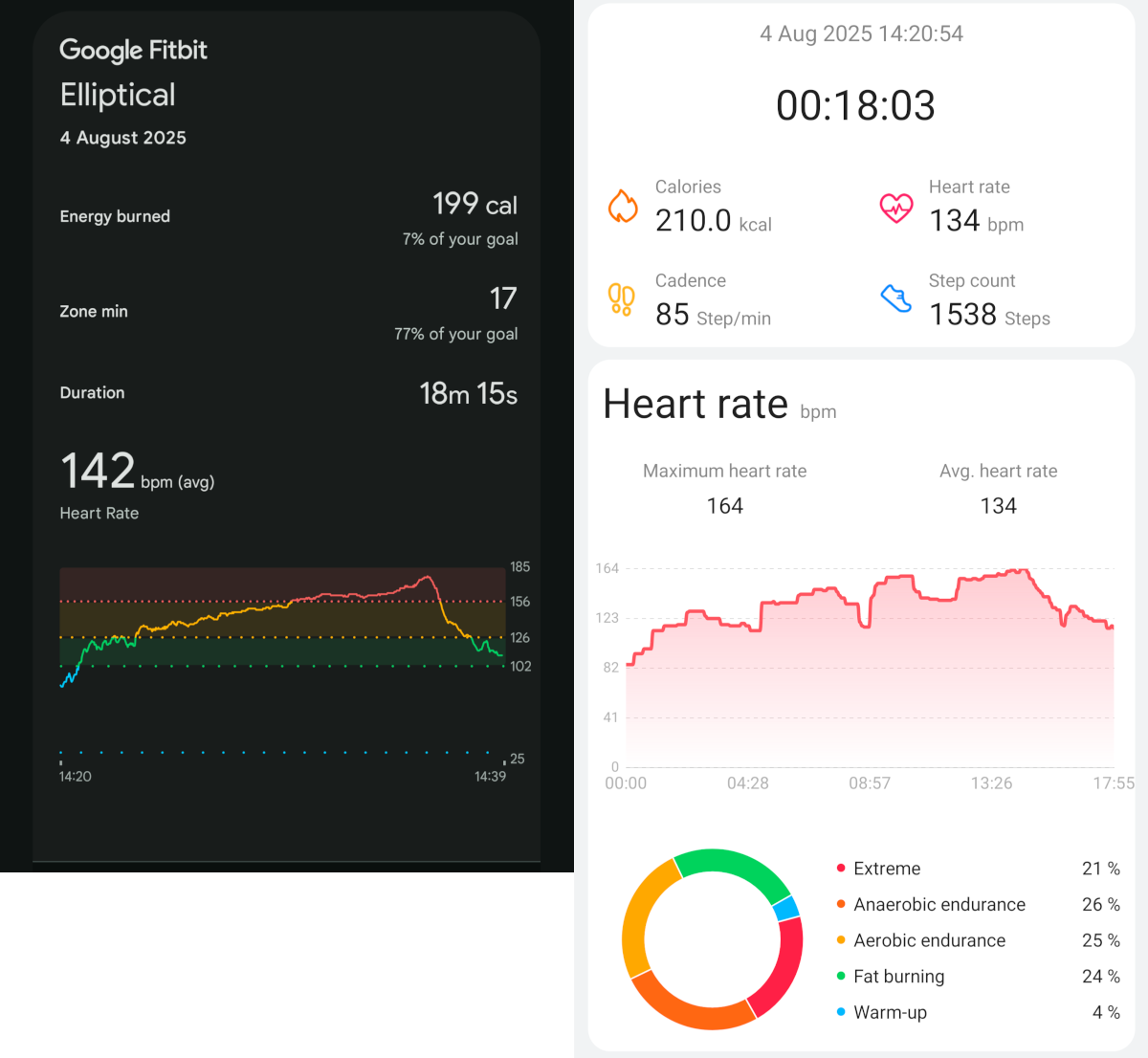
A strength training session:
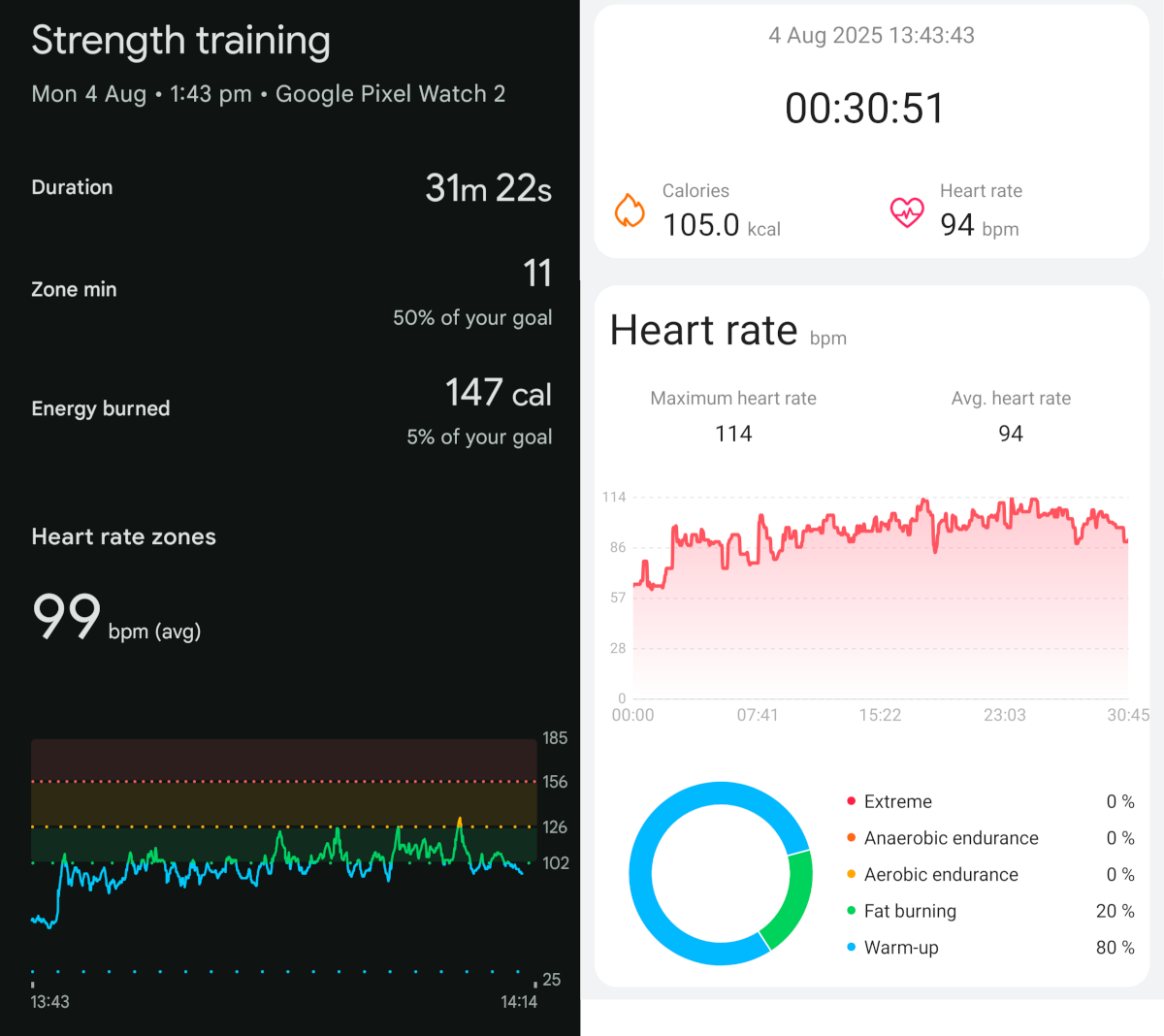
All in all, a good experience, but somewhat marred by the inconsistency of the heart rate sensor.
Smartwatch Features
As a smartwatch, the Y101 offers notification mirroring, music control, weather updates, and a handful of basic apps. The notification system works well enough, displaying messages and alerts from your phone, though interaction options are limited.
Some of them:
-
Notifications / messages: these watches don’t truly allow you to read your messages. Instead, they mirror your notifications and are thus limited by what they show. Notifications are grouped by app and they work well enough, but there are some glaring omissions on the list of apps that can be whitelisted, like Google Calendar. The “Notify for Smartwatches” app on the Play Store can help with this.
-
Alarms: they can be created in-watch and work reliably.
-
Timers: timers can be left in the background without being discarded and also work well enough, but they only vibrate, for some reason; they vibrate for quite a while, so they’re hard to miss.
-
Bluetooth calling: no issues here. The speaker and microphone work really well. Callers could hear me and I could hear them just fine. It worked impeccably.
-
Weather: the weather app is the best of the budget watches I’ve tried so far. It gives the current conditions, a 12-hour forecast, and a 7-day forecast, and all of that is displayed impeccably and is easy to read. Nothing to complain about here other than the scrolling issue mentioned earlier.
-
Find my phone / watch: works fine both ways.
The app: GloryFitPro
I’ll cover the app in a separate review later, as I’d rather avoid repeating myself given many higher-quality budget watches rely on the GloryFitPro platform and companion app.
In brief, throughout my usage the connection to the app was stable with no dropouts. Notifications came through quickly and consistently, and data synced to the app frequently enough.
The app is cleanly organized. Daily health metrics like heart rate and SpO2 are easy to find and are presented with useful details and attractive graphs - which can’t be zoomed, but do show values and timestamps when tapped.
Conclusion
If you’re shopping at the true budget end, the Y101 punches above its price: a sharp AMOLED display, long battery life even with heavy use, reliable single‑band GPS for casual workouts, and a genuinely useful LED torch with a dedicated button. Day‑to‑day performance is smooth, notifications are dependable, and the GloryFitPro app keeps syncing frequent and the basics tidy. For what it costs, the overall experience feels more premium than expected.
There are caveats you shouldn’t ignore. Heart‑rate readings can be erratic after “cold starts”; background HR may spike unrealistically until it settles, and workout HR is usually fine but only okay for accuracy. Quality control also seems variable - across two units I saw one with faulty GPS and another with a missing charger magnet.
Even so, at around £35 / $47 / €40, it’s easy to recommend to value‑seekers who prioritize GPS route tracking, battery endurance, and a readable, vibrant screen over medical‑grade HR fidelity. Walkers and runners wanting distance, pace, and clean route maps should be happy, and anyone who appreciates a rugged feel plus the practicality of a proper LED torch will find a lot to like.